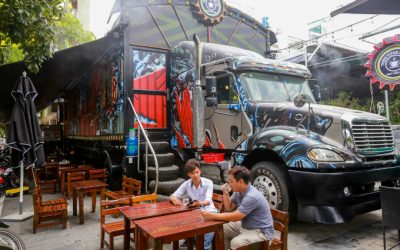HÀ NỘI — Việt Nam’s logistics industry can reap the rewards of the country’s growing economy.
Nguyễn Thị Thu Trang, director of Việt Nam Chamber of Commerce and Industry’s WTO Centre, told a conference in Hà Nội on Monday that the Comprehensive and Progressive Agreement for Trans-Pacific Partnership (CPTPP) is expected to bring a conducive business environment for logistics activities.
Trang told Việt Nam News: “The CPTPP commitments, which eliminate tariffs and non-tariff barriers, will create conditions to increase the supply of goods, enhance the e-commerce sectors, and increase the demand for logistics services.”
As the agreement also sets a legal framework to create a healthy and open business, Trang said: “Logistics, after all, can enjoy sweet fruits as the result.”
Also seeing the strength of the industry, Deputy Prime Minister Vương Đình Huệ told the Vietnam Logistics Forum 2019 themed “Logistics Adds More Value to Agricultural Products” in Đà Nẵng City that ministries and industries should boost the sustainable development of the logistics sector.
According to Minister of Agriculture and Rural Development Nguyễn Xuân Cường, agriculture products of Việt Nam went to 185 countries and territories, reaching the export value of US$42.5 billion last year, adding that “logistics enjoyed much from the export.”
At the same forum, data from the Ministry of Industry and Trade (MoIT) said the local logistics sector maintained a growth rate of 13-15 per cent per year thanks to the growth of the domestic economy and import-export activities.
The World Bank report on Logistics Performance Index (LPI) released on July 24, 2018 also noted that Việt Nam ranked 39th out of 160 surveyed countries, up 25 places compared to 2016 and ranked third among ASEAN countries.
Challenges for the logistic industry
But some fear, to reach these goals, many hurdles need to be overcome.
Considering the development of the transportation and logistics sectors, insiders still saw shortcomings such as high costs and low linkages between service businesses and production and import-export enterprises.
Đinh Thị Mỹ Loan, chairwoman of the Vietnam Retailers Association told Việt Nam News: “Logistics is one of the key important parts in retail, however, the high cost of warehousing and transportation systems have added burden to goods prices, affecting competitiveness of the local retail.
“In some cases, logistics fees account for 70 per cent of the product’s price.”
A representative from MoIT said logistics cost for one kilogramme of dragon fruit to the US via air was of $7, half of the export prices of the product, adding that the high cost was lowering competitiveness in the foreign market.
In addition, Nguyễn Nhật, deputy minister of Transport, said transport was the backbone of the industry, however the local transport has not yet met demand, especially in the export of agriculture products.
Nhật said: “Though Việt Nam has 50 domestic and 130 international air routes with refrigerated cargo aircraft for transporting products, those with the refrigerated cargo fleets are all foreign airlines.”
Officials from the World Bank said Việt Nam joined the logistics market after many countries, so it must quickly simplify procedures for goods clearance, build more logistic centres and enhance cooperation with the private sector for better and faster logistic service. — VNS







